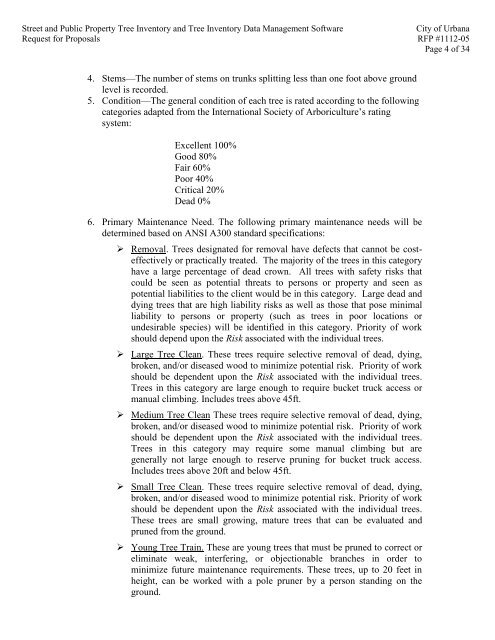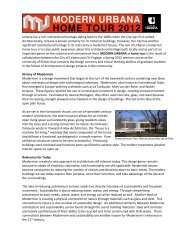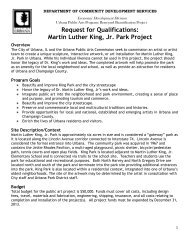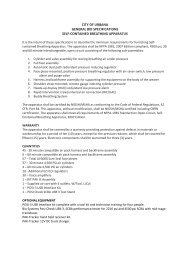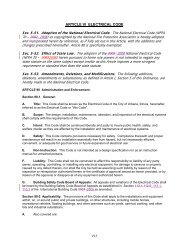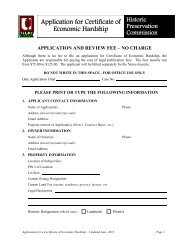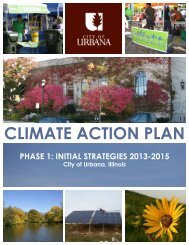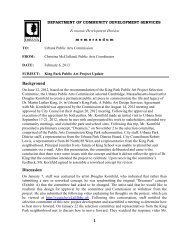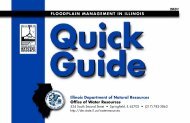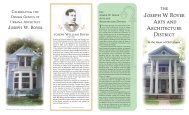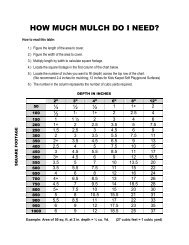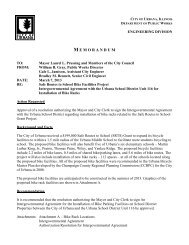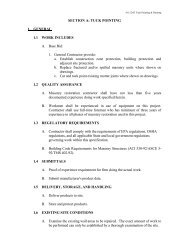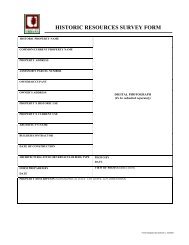RFP #1112-05 Bid Specifications - City of Urbana
RFP #1112-05 Bid Specifications - City of Urbana
RFP #1112-05 Bid Specifications - City of Urbana
Create successful ePaper yourself
Turn your PDF publications into a flip-book with our unique Google optimized e-Paper software.
Street and Public Property Tree Inventory and Tree Inventory Data Management S<strong>of</strong>tware<br />
<strong>City</strong> <strong>of</strong> <strong>Urbana</strong><br />
Request for Proposals <strong>RFP</strong> <strong>#1112</strong>-<strong>05</strong><br />
Page 4 <strong>of</strong> 34<br />
4. Stems—The number <strong>of</strong> stems on trunks splitting less than one foot above ground<br />
level is recorded.<br />
5. Condition—The general condition <strong>of</strong> each tree is rated according to the following<br />
categories adapted from the International Society <strong>of</strong> Arboriculture’s rating<br />
system:<br />
Excellent 100%<br />
Good 80%<br />
Fair 60%<br />
Poor 40%<br />
Critical 20%<br />
Dead 0%<br />
6. Primary Maintenance Need. The following primary maintenance needs will be<br />
determined based on ANSI A300 standard specifications:<br />
‣ Removal. Trees designated for removal have defects that cannot be costeffectively<br />
or practically treated. The majority <strong>of</strong> the trees in this category<br />
have a large percentage <strong>of</strong> dead crown. All trees with safety risks that<br />
could be seen as potential threats to persons or property and seen as<br />
potential liabilities to the client would be in this category. Large dead and<br />
dying trees that are high liability risks as well as those that pose minimal<br />
liability to persons or property (such as trees in poor locations or<br />
undesirable species) will be identified in this category. Priority <strong>of</strong> work<br />
should depend upon the Risk associated with the individual trees.<br />
‣ Large Tree Clean. These trees require selective removal <strong>of</strong> dead, dying,<br />
broken, and/or diseased wood to minimize potential risk. Priority <strong>of</strong> work<br />
should be dependent upon the Risk associated with the individual trees.<br />
Trees in this category are large enough to require bucket truck access or<br />
manual climbing. Includes trees above 45ft.<br />
‣ Medium Tree Clean These trees require selective removal <strong>of</strong> dead, dying,<br />
broken, and/or diseased wood to minimize potential risk. Priority <strong>of</strong> work<br />
should be dependent upon the Risk associated with the individual trees.<br />
Trees in this category may require some manual climbing but are<br />
generally not large enough to reserve pruning for bucket truck access.<br />
Includes trees above 20ft and below 45ft.<br />
‣ Small Tree Clean. These trees require selective removal <strong>of</strong> dead, dying,<br />
broken, and/or diseased wood to minimize potential risk. Priority <strong>of</strong> work<br />
should be dependent upon the Risk associated with the individual trees.<br />
These trees are small growing, mature trees that can be evaluated and<br />
pruned from the ground.<br />
‣ Young Tree Train. These are young trees that must be pruned to correct or<br />
eliminate weak, interfering, or objectionable branches in order to<br />
minimize future maintenance requirements. These trees, up to 20 feet in<br />
height, can be worked with a pole pruner by a person standing on the<br />
ground.


